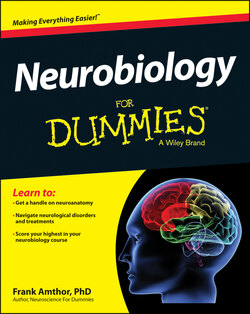Читать книгу Neurobiology For Dummies - Frank Amthor - Страница 55
The genetic code
ОглавлениеThe genetic code is a sequence of three nucleotides (called a codon) that specifies an amino acid. As I mention earlier in this chapter, four types of nucleotides exist, so a three-nucleotide sequence (such as ACT or TAG) with four choices at each position allows for 64 possible codons (or 43). However, only 20 amino acids are used to make proteins. Several different codons specify the same amino acid. This may sound redundant, and the concept is sometimes called degeneracy, but this degeneracy does have benefits. One benefit is that some mutations that change one of the nucleotides may not change which amino acid is produced — so the protein’s function won’t be compromised.
Messenger RNA has a “start” codon that codes for methionine in eukaryotes. Three special codons (TAA, TGA, and TAG), called “stop” codons, signify the end of the coding region for one protein. Start and stop codons allow the biochemical machinery that generates proteins from DNA to begin and end on the right nucleotides. A frame shift error occurs when translation doesn’t start at the beginning of a codon, but reads the end of one codon and the beginning of another. A frame shift error causes the entire sequence of amino acids to be wrong.
